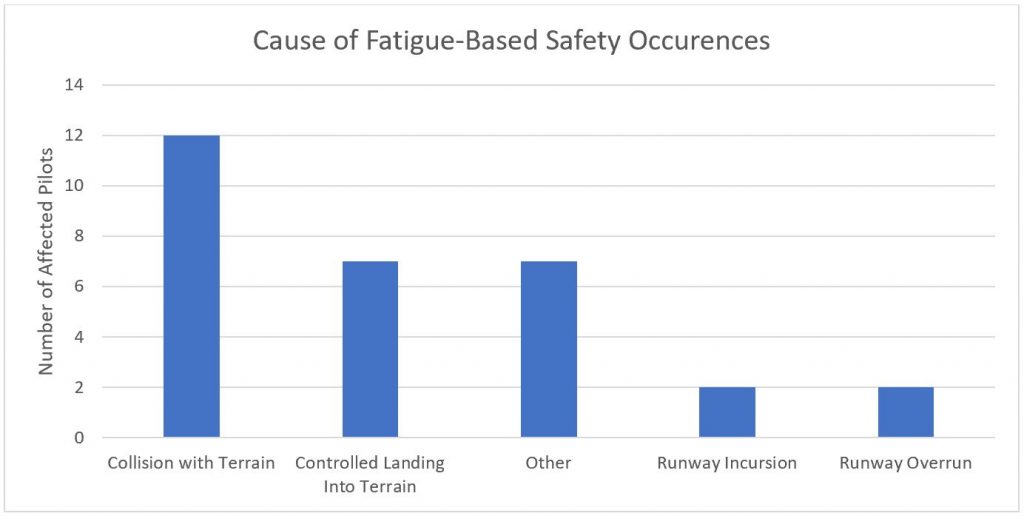
Fatigue is known as one of the most common causes of human performance errors as stated in the “Dirty Dozen of Human Factors”. It is also recognized as an occupational hazard, and it can directly influence both physical and mental work performance capabilities.
During AVCON.WW team’s research and analysis, of the 34 pilot fatigue related aviation safety investigations, conducted between 1990-2018, by Transportation Safety Board (TSB), we found two leading causes. Overwork and inadequate sleep between duty time. The most common fatigue related pilot error accidents are collisions with terrain, as demonstrated in the figure below.

Fatigue is not restricted to Pilots alone, It impacts us all, whether at work or home, causing us to be easily distracted and to lose situational awareness. Unfortunately, it is all too easy to ignore or underestimate the impact of lack of sleep and to overestimate our reactionary ability skills when we are tired or exhausted. This is becoming highly problematic in safety demanding industries, such as the railways, marine and aviation sectors. Defining maximum duty time and minimum rest periods between shifts is not enough by themselves to manage and reduce fatigue risk in an organization. Transport Canada is working to address these challenges.
It is important to note that Transport Canada is implementing the prescriptive approach on Dec 12, 2022. Under these prescriptive regulations, operators must define two things: (1) maximum hours of work, flight time, and flight duty periods and (2) minimum rest periods and time free from duty.
Implementing a Fatigue Risk Management System (FRMS) as an alternative to the prescriptive approach will provide both leaders and employees the ability to manage the actual fatigue risk in their unique operational environment. The FRMS is described by Performance-Based Approach, and it ensures that FRMS policies and procedures meet to the organization’s specific operations.
In addition, the performance-based approach implementation is optional, but it will be implemented effective December 12, 2020. Here are the 4 components of FRMS:
- The Plan
- The Process
- The Promotion
- The Quality Assurance Program
If you want to know more on how to manage fatigue risks and/or how to apply FRMS in your aviation Safety Management System (SMS) we can help. Please contact us at info@avconwow.com.
